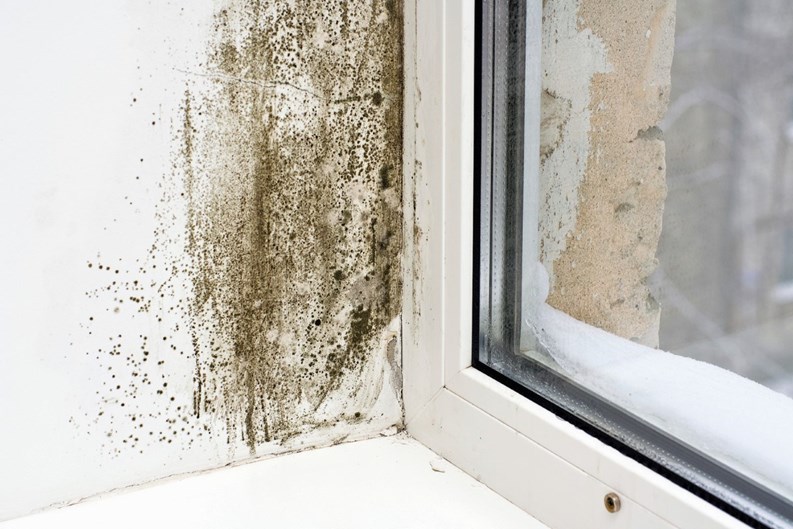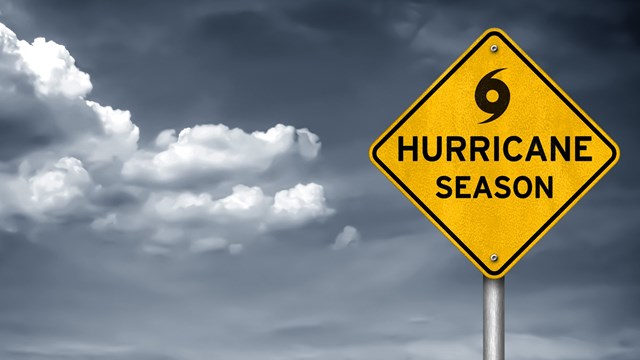Mold – it’s an ugly four-letter word in more ways than one. Nobody wants to think about the fact that this fungus can be found anywhere where water leaks or drainage problems are present. Mold can cause serious damage to a condominium, like ruining drywall, and is believed to trigger numerous health problems in susceptible persons.
But when your home is contaminated by mold, and you just want it to go away, who pays for the damage and the cleanup? Is it the responsibilityof the homeowner? Is it the condo association’s responsibility? Is it the next door neighbors’ responsibility if the water came from their unit and damaged yours? The answer to all of these questions is… it depends.
The condo association’s master policy, as well as the association documents, spell out what parts of the complex the condo association will insure and what parts are the unit owner’s responsibility.The condominium association insurance typically covers the condo building, any common property such as hallways, lobbies and shared terraces, etc., as well as liability insurance for the association.
Unit owners are typically responsible for whatever part of their unit the master policy doesn’t cover, including damages, as well as any additions or alterations they’ve made to their homes.
“How the unit owner’s insurance and the condominium association’s insurance interact is dependent upon the language in the condo documents, specifically the “unit boundaries” that define the unit owner’s responsibility for damaged property as opposed to the association’s responsibility,” says GeorgeSalter of Insurance Reconstruction Services in Smithfield, Rhode Island.
Homeowner’s Policy May Not Cover Mold Damage
According to the New York-based Insurance Information Institute (III), damage from mold isn’t included in your typical homeowner’s insurance policy. Well, not exactly. It is included if the mold happened because of what’s called a ‘covered peril,’ which means an event that the policy would have covered.
For example, a pipe bursts in your unit and the water floods, ruining your prized possessions. In this case, your homeowner’s insurance policy classifies a broken pipe as a covered peril, so the damage it causes and the cost of cleaning up the water and the mold are covered (of course, you shouldstill check with your individual policy just to make sure).
However, mold caused by water from excessive humidity, long-term water leaks (which are different than broken pipes), or condensation is considered a maintenance issue. When you own a condo, you are expected to maintain your unit. These situations are fixable by the homeowner, so if themold is a result of the fact that you didn’t keep up with the maintenance of your home, the mold cleanup is not covered by your policy and you’re on your own to get it fixed. This is called a first-party mold claim.
Party of the First (or Third) Part
“A first-party mold claim refers to mold damage to your own property,” says Anthony W. Bucci, Jr. CPCU, AIS, president of Bucci Insurance Group in West Warwick, Rhode Island. “For example, if the interior of your condo unit has mold damage that is a first-party claim, which means you’re responsible. Third-party claims are mold damage that you could be held responsible for causing.” One exampleof a third-party claim, he says, would be when your pipe breaks and water from it leaks to the downstairs unit, causing a flood and mold in that lower unit.
But what about coverage for mold caused by dramatic floods? After all, this isn’t the fault of the condo, the homeowner, or even a maintenance issue. Who is responsible for the mold caused by an overflow from a major body of water? “Whether coverage for water damage from a dramatic flood exists depends on whether the unit owner has flood insurance,” which is managed by the Flood Insurance and Mitigation Administration (FIMA), a component of FEMA, “and is available through Independent Insurance AgentsNFIA policy,” says Salter. “In the absence of a flood policy there would be no coverage for either the water damage or the resulting mold under a typical homeowner’s policy, as damage by flood is specifically excluded.”
The Insurance Information Institutesays that some companies may decide to cover all mold claims and price the policy accordingly, while some may prefer to create an absolute exclusion. Others may exclude mold, but offer an attachment to the policy, called an endorsement, that allows you to add the coverage. Still other companies may provide a tighter definition of what is and what is not covered. Most major insurers have announced some form of restriction on water damages in their policies.
Salter says that each insured loss is handled on a case-by-case basis, with the insurance company, through its adjuster, determining coverage, the amount of the settlement, and the disposition of the damaged property. “Typically the insurance company limits mold coverage to a specific dollar amount, usually $5,000 or $10,000,” he says. “The homeowner would be responsible for any remediation or repairs above that limitation. This is first-party coverage on insured property, and does not include any health-relatedexpenses of the occupants.”
Blame is Hard to Pin Down
Unfortunately, insurance experts say that determining the responsible party in a mold claim can be hard to pin down. “Most likely, condo owners or tenants will be up against a battle,” says Scott Paxton, director of the Rental Protection Agency in Utah. “They will turn to their condo association, who will refer the owner/tenant back to their homeowners insurance. The homeowner’s policy will avoid responsibility at all costs and blame theassociation or builder. So now what? How can you get someone to take responsibility for the mold?”
“The key is for the condo owner/ association to have a good broker who can negotiate a mold coverage endorsement that will be as broad as possible,” says Susan Neuman, J.D., president, Environmental Insurance Agency, Inc., in Larchmont, New York. “Therewill be a price for this endorsement, which… can be lowered if the association has many members.”
Neuman says that assuming there is mold coverage under the property policy, it would cover removal of mold damage to the building or personal property. “It could also cover business income loss if there has been damage to first-party property due to a covered loss,” says Neuman. “It would not cover bodily injury and would not cover property damage to third-party property. Third-party claims could only be covered under a site pollution liability (pollution legal liability) policy, which covers third-party bodily injury, property damage, and remediation costs due to a pollution condition (potentiallyincluding mold – see the language).”
Paxton warns homeowners to be prepared to document their claim. “In fact, it's always better to be prepared with documentation before contacting your association or insurance company. The more proof you have showing thatthe mold is present, and not directly caused by you, the better.”
Expert Witness
Mike “The Mold Guy” Pugliese has been an expert witness in many lawsuits related to mold and has written several books on the subject, including “The Homeowners Guide to Mold.” “Just because your insurance company tells you that you don’t have coverage doesn’t mean you don’t,” says Pugliese. “I’ve had clients who have been denied and had the worst mold problems, but they had a mold rider and weren’t giventhe right answer. It happens more than once.”
He also explains that the $10,000 limit is not enough to cover many cleanups. To make sure you receive adequate coverage for your claim, he suggests that homeowners get their own environmental assessment of the property. “If it’s a third-party liability – the neighbors have a leak and it came through onto your property – they’ll come with their own guy,” says Pugliese. “Bring in your expert, too.”
Then he explains, maybe it’s time to send in a demand for additional living expenses if the property is uninhabitable for awhile. “There are three formulas that are used, and how much they give depends on your geographical area,” says Pugliese. “They include direct billing, rental value fully furnished, and 10 percent of the value of your home. In addition, you can get reimbursement for meals per day per person and they pay for havingyour furniture packed up.”
Salter suggests that if a homeowner thinks they have a mold problem, they should contact a qualified mold remediation company or a certified industrial hygienist. “A mold remediation company can perform a visual inspection using instruments like a borescope to look into wall cavities, for example,” he says. “He can then propose remediation options. A certified industrial hygienist can take air samples and analyze them in a lab.”
However, he cautions people to be wary of scare tactics. “The media has sensationalized the potential problems associated with mold,” he says. “The reality is that some people have health issues related to exposure to certain species of mold, and others do not. Mold is everywhere in our environment, both outdoors and indoors, all of the time.”
Lisa Ianucci is a freelance writer and a frequent contributor to New England Condominium magazine.







3 Comments
Leave a Comment